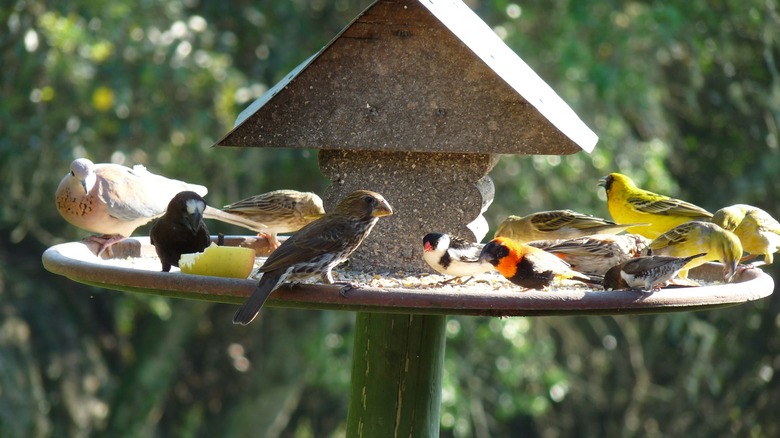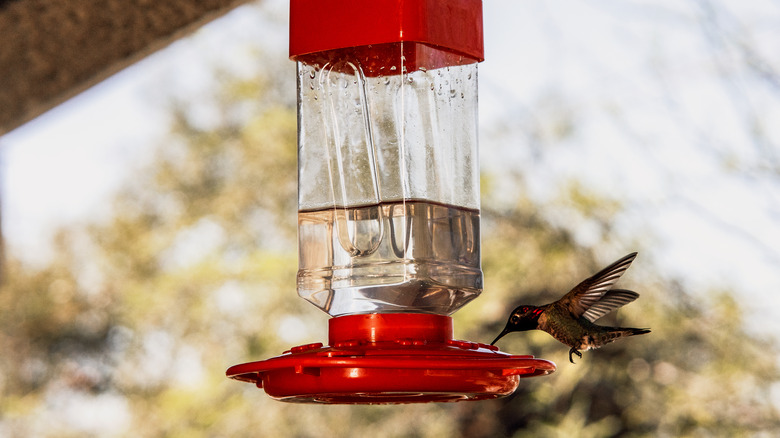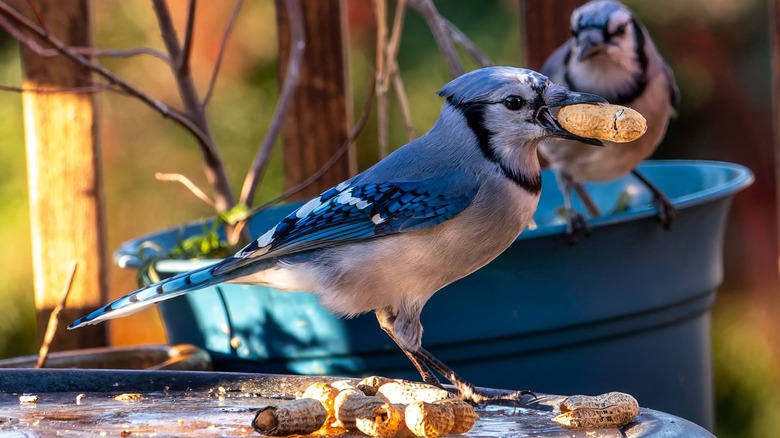What To Do If You Find Mold In Your Bird Feeder
Those funny feathered guys. Their colors, their spirit, and their songs provide us with hours of nature-filled fun. We love watching them, and as a country, we love feeding them. The US Fish & Wildlife Service says about 59 million Americans feed birds. There are many beneficial reasons to keep a feeder in your yard, but weather conditions, moisture, and the seed quality can create unwanted mold build-up in feeders. This can lead to potential illnesses in birds, such as aspergillosis, a respiratory ailment, avian trichomoniasis, a parasitic disease, and salmonella (a bacterial infection that can be fatal to birds). If you find moldy, mildewed seeds in your feeder or evidence of black mold in a hummingbird feeder, what's the best action to take?
The solution to mold in a feeder and the method to prevent mold in the feeder is the same: clean your bird feeder regularly. If you see mold, the most important thing to do is empty the feeder and start over after thoroughly cleaning the entire apparatus. However, taking preventive measures is the best way to keep mold from showing up in the first place. To do this, keep an eye on the seed in the feeder. If it's clumping together, this implies there's too much moisture in the container. If you have a hummingbird feeder, watch for black mold or cloudy nectar — both indicate a problem.
Clean up every two weeks, or more
Feeders, no matter their shape or size, should be cleaned every two weeks, while hummingbird feeders should be cleaned every 3 to 5 days. To clean a bird feeder, remove all the food, fill a container or sink with water and dish soap, or make a solution of nine parts water to one part bleach. Allow the feeder to soak for a few minutes, ensuring all the parts have been submerged at some point. Scrub all surfaces with a stiff brush and rinse thoroughly. Let the feeder dry completely before filling it with fresh food.
Mold, especially black mold, can also appear in hummingbird feeders. Their favorite food, sweet nectar, can clog feeding tubes and decay. In the hottest weather, a danger to hummingbirds is cloudy nectar. If you spot this, the food is spoiled and should be replaced immediately so the hummingbirds don't become ill. Surfbirds recommends cleaning a hummingbird feeder frequently using a solution of 1/4 cup bleach to a gallon of water. Avoid using soap, as studies indicate hummingbirds can taste it and don't like it. You can also use one part vinegar to two parts water. Soak the feeder for several hours and scrub with a bottle brush to clean inside the feeder. Rinse thoroughly and fill with fresh nectar.
Prevention is the best solution
To keep mold and mildew out of your feeder, you can use a device with a screen in the bottom, allowing condensation to drain out. If you think rain is getting into the feeder, add a plastic baffle to cover the top opening. Another way to help birds stay fed and healthy is to have several feeders in your yard rather than one large feeder to prevent overcrowding. We have tips on making different kinds of feeders for different types of birds. But, no matter if you create or buy your feeders, regular maintenance and cleaning will keep them beautiful and in good working condition for many years.
While working to keep avian friends healthy, the Audubon Society recommends you also clean your birdbath. Use a cleaning solution of nine parts water to one part vinegar and a stiff brush to remove dirt, debris, and algae. Because birds immerse themselves in the bath water, avoid using dish soap, which can strip the birds of the oils they need for warmth and protection. Replenish the bath with fresh water every day or so. No matter what, do not allow the basin to accumulate dirty, fetid water, as this is the perfect environment for mosquitoes – pests that can carry diseases to birds, people, and their pets. To keep the water fresh and flowing, consider adding a stream feature or a sun-powered fountain pump to your birdbath.


